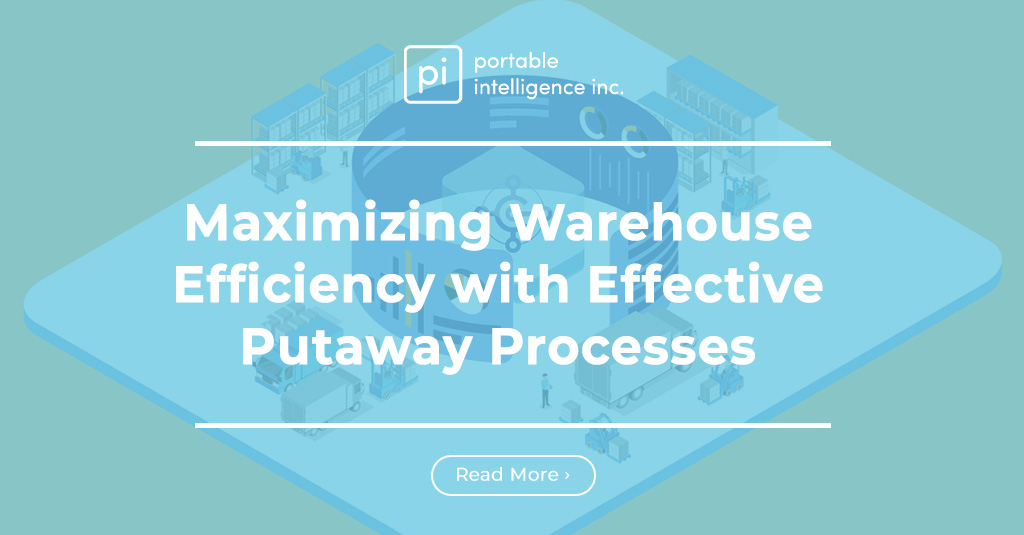Warehousing plays a critical role in modern supply chain management, serving as the bridge between production and distribution. It acts as a hub where raw materials are received, transformed, stored, and eventually dispatched to meet consumer demands. Efficient warehousing is vital for businesses to maintain smooth operations, reduce costs, and meet customer expectations in today’s fast-paced, competitive market.
Traditionally, warehousing involved manual processes and limited technology, leading to challenges like suboptimal space utilization, stockouts, overstocking, and inefficient order fulfillment. However, in recent years, the integration of big data analytics has revolutionized the way warehouses operate, transforming them into dynamic and data-driven centers of efficiency.
Data-driven warehousing represents a paradigm shift from traditional, gut-feel decision-making to a systematic and data-backed approach. It involves the collection, analysis, and interpretation of vast amounts of data generated within the warehouse and across the supply chain. This data-driven approach empowers warehouse managers and supply chain professionals to make well-informed decisions, optimize operations, and proactively respond to changing market demands.
By leveraging big data analytics, warehouses can gain valuable insights into various aspects of their operations, such as inventory management, asset tracking, order processing, and labor productivity. The availability of real-time data empowers stakeholders to monitor key performance indicators (KPIs) continuously, identify bottlenecks, and implement continuous improvements.
The emergence of big data analytics has been a game-changer for warehousing, offering unprecedented capabilities to handle massive volumes of data in real-time. With the advent of the Internet of Things (IoT) devices, radio-frequency identification (RFID) tags, and sensor technology, warehouses now generate a staggering amount of data from various sources.
Big data analytics enables warehouses to process and analyze this data, extract meaningful patterns and trends, and gain actionable insights. These insights can lead to smarter decision-making, reduced operational costs, increased productivity, improved customer service, and enhanced overall efficiency.
Data-driven warehousing refers to the practice of utilizing data analytics, advanced technologies, and real-time data streams to optimize all aspects of warehouse operations. It involves collecting data from various sources, such as IoT devices, sensors, RFID tags, warehouse management systems (WMS), and external supply chain data. This vast and diverse data is then processed and analyzed using sophisticated algorithms and tools to extract valuable insights and patterns.
The primary objective of data-driven warehousing is to make informed decisions based on data-backed evidence rather than relying on intuition or historical practices. By integrating data analytics into the core processes, warehouses can adapt quickly to changing market conditions, minimize operational inefficiencies, and achieve higher levels of productivity and customer satisfaction.
Key Components and Technologies Involved
- Internet of Things (IoT) Devices: IoT devices, equipped with sensors and connected to the internet, play a pivotal role in data-driven warehousing. They enable real-time data capture from various assets, including inventory, equipment, and transportation vehicles. IoT devices provide critical data points related to temperature, humidity, location, and other environmental factors that impact warehousing operations.
- Radio-Frequency Identification (RFID) Technology: RFID tags allow warehouses to track and identify individual items within the facility. By affixing RFID tags to products, inventory management becomes more accurate and efficient. RFID technology also enables faster and automated order processing, reducing human errors and expediting the shipping process.
- Warehouse Management Systems (WMS): A robust WMS acts as the backbone of data-driven warehousing. It serves as the central platform for managing and organizing warehouse operations. WMS collects and stores data related to inventory levels, order processing, shipping, and more. The integration of big data analytics with WMS provides actionable insights for better decision-making.
- Data Analytics and Machine Learning: Advanced data analytics tools and machine learning algorithms are essential components of data-driven warehousing. These technologies process large datasets to identify patterns, forecast demand, optimize routes for material handling equipment, and predict maintenance requirements. Machine learning models continuously improve their accuracy over time, making warehouses more responsive and agile.
- Benefits of Adopting Data-Driven Warehousing Practices
- Improved Inventory Management: Data-driven warehousing facilitates real-time monitoring of inventory levels, demand forecasting, and automated replenishment. This leads to reduced carrying costs, minimized stockouts, and improved inventory turnover rates.
- Enhanced Operational Efficiency: By analyzing data from various warehouse processes, such as order picking, packing, and shipping, inefficiencies and bottlenecks can be identified and addressed. Streamlining these operations leads to faster order fulfillment and increased productivity.
- Proactive Decision-Making: With access to real-time and historical data, warehouse managers can make informed decisions promptly. Data-driven insights help identify potential issues before they escalate, enabling proactive problem-solving and risk mitigation.
- Optimal Resource Allocation: Data analytics enables better resource planning, ensuring that labor, equipment, and storage space are efficiently utilized. This optimization results in cost savings and maximized warehouse capacity.
Explaining Big Data Analytics and Its Relevance to Warehousing Operations
Big data analytics is a powerful technology that involves the processing and analysis of massive datasets to reveal patterns, trends, and insights that would otherwise be difficult to identify using traditional methods. In the context of warehousing operations, big data analytics plays a transformative role by leveraging data from diverse sources to enhance decision-making and optimize various aspects of the supply chain.
Warehouses generate a vast amount of data daily, ranging from inventory levels and order history to equipment performance and transportation metrics. Traditional data processing tools struggle to handle the sheer volume, velocity, and variety of data generated in modern warehousing. This is where big data analytics steps in, enabling warehouses to process real-time data streams, historical data, and external data sources efficiently.
How Big Data Analytics Can Handle Vast Amounts of Data Generated in a Warehouse
- Data Processing at Scale: Big data analytics platforms are designed to handle large-scale data processing. They distribute data across clusters of servers, enabling parallel processing and rapid analysis. This architecture allows warehouses to scale their data processing capabilities as the volume of data increases.
- Real-Time Data Streaming: With big data analytics, warehouses can ingest and analyze real-time data streams from IoT devices, sensors, and RFID tags. This capability empowers warehouses to make decisions and take actions in response to dynamic events as they happen.
- Data Storage and Management: Big data analytics solutions often incorporate distributed databases that efficiently store and manage large volumes of data. This ensures that warehouses can access historical data and perform retrospective analyses to identify trends and patterns.
Use Cases of Big Data Analytics in Improving Warehousing Processes and Decision-Making
- Predictive Inventory Management: By leveraging historical sales data, market trends, and other relevant factors, big data analytics can predict future demand more accurately. This enables warehouses to maintain optimal inventory levels, reducing the risk of stockouts and overstocking.
- Route Optimization: Data-driven route optimization helps streamline the movement of goods within the warehouse, as well as outbound logistics. By considering factors like order priorities, inventory locations, and traffic conditions, warehouses can reduce travel time and improve overall efficiency.
- Predictive Maintenance: Big data analytics can monitor the performance of machinery and equipment within the warehouse. By analyzing data related to usage patterns and equipment health, warehouses can predict maintenance requirements and schedule repairs before critical failures occur, minimizing downtime.
- Demand Sensing: Data-driven demand sensing allows warehouses to respond swiftly to shifts in customer demands. By analyzing data from various sources, including social media, online searches, and market trends, warehouses can adjust their inventory and production strategies in real-time.
- Labor Optimization: Big data analytics can analyze labor productivity data, helping warehouses optimize workforce allocation and scheduling. This leads to better utilization of human resources and increased overall efficiency.
Enhancing Inventory Management through Big Data Analytics
- Inventory Optimization using Predictive Analytics
Inventory management is a critical aspect of warehousing, and maintaining the right balance of stock levels is essential to ensure smooth operations and meet customer demands efficiently. Traditional inventory management approaches often relied on historical sales data and manual forecasting, leading to challenges such as overstocking and stockouts.
Big data analytics revolutionizes inventory management through predictive analytics. By analyzing historical sales data, market trends, customer behavior, and other relevant variables, warehouses can predict future demand patterns more accurately. This proactive approach enables them to optimize inventory levels, ensuring that they have sufficient stock on hand to meet demand without holding excessive inventory that ties up capital and storage space.
Predictive analytics also allows warehouses to identify seasonal demand trends, promotional impacts, and other factors that influence demand fluctuations. Armed with these insights, warehouses can adjust their inventory strategies accordingly, improving overall inventory turnover rates and maximizing profitability.
- Inventory Optimization using Predictive Analytics
- Demand Forecasting and Reducing Stockouts with Data-Driven Insights
Stockouts are a significant concern for warehouses as they result in lost sales, dissatisfied customers, and potential damage to the brand reputation. Big data analytics plays a crucial role in reducing stockouts by providing accurate demand forecasting.
Data-driven insights enable warehouses to identify patterns and anomalies in customer buying behavior, external market factors, and historical demand data. By combining this information with real-time sales data and supply chain information, warehouses can make more accurate demand predictions and align their inventory levels accordingly.
Moreover, big data analytics facilitates demand sensing, which allows warehouses to respond quickly to sudden changes in demand. By monitoring social media, online searches, and other external data sources, warehouses can detect emerging trends and adjust inventory levels and procurement strategies in real-time. - Minimizing Carrying Costs and Excess Inventory through Data Analysis
Carrying costs, such as warehousing, insurance, and financing expenses, can significantly impact a warehouse’s bottom line. Big data analytics helps minimize carrying costs by optimizing inventory levels and reducing excess inventory.
By analyzing inventory turnover rates, lead times, and demand patterns, warehouses can identify slow-moving and obsolete items. With this data-driven insight, they can implement liquidation strategies, negotiate better supplier terms, or adjust pricing to clear excess inventory and free up valuable warehouse space.
Additionally, big data analytics enables just-in-time (JIT) inventory practices, where warehouses receive new inventory only when needed, minimizing the need for extensive warehousing and reducing carrying costs.
By leveraging big data analytics to optimize inventory management, warehouses can achieve significant benefits, including improved cash flow, reduced holding costs, and enhanced customer satisfaction. Embracing data-driven insights allows warehouses to transform from reactive inventory practices to proactive, demand-driven strategies that adapt to the ever-changing market landscape.
Real-Time Monitoring and Tracking of Assets
- Utilizing IoT Devices and Sensors for Real-Time Asset Tracking
In the dynamic world of modern warehousing, real-time tracking and monitoring of assets are crucial to ensure efficient operations and timely order fulfillment. Internet of Things (IoT) devices and sensors have revolutionized asset tracking, providing warehouses with unprecedented visibility into the movement and condition of goods and equipment.
IoT devices equipped with GPS, RFID, temperature sensors, and other data-capturing capabilities are strategically placed throughout the warehouse and attached to inventory items, equipment, and vehicles. These devices continuously generate data, transmitting valuable information to a centralized data platform. Warehouse managers can access real-time insights, enabling them to track the exact location of inventory, monitor temperature and humidity levels, and identify potential bottlenecks in the supply chain. - Preventative Maintenance and Predictive Analytics to Reduce Downtime
One of the most significant advantages of data-driven asset tracking is the ability to implement preventative maintenance practices. IoT devices and sensors can monitor the health and performance of equipment and machinery in real-time. By analyzing the data collected, warehouses can identify early signs of wear and tear, performance degradation, or potential failures.
Predictive analytics models can then process this data to predict maintenance needs and identify the optimal time for maintenance interventions. This proactive approach minimizes unplanned downtime due to equipment failures and reduces the risk of costly repairs or replacements. Ultimately, preventative maintenance leads to increased equipment reliability, improved operational efficiency, and cost savings. - Improving Security and Loss Prevention through Data-Driven Surveillance
Warehouse security and loss prevention are critical concerns, given the value of inventory and assets stored within the facility. Data-driven surveillance offers enhanced security measures by combining real-time asset tracking and analytics with video monitoring and intrusion detection systems.
When an IoT device or sensor detects unauthorized movements or suspicious activities, the data platform triggers alerts to security personnel in real-time. This proactive approach enables quick responses to potential threats, helping prevent theft, vandalism, or unauthorized access.
Moreover, data-driven surveillance can provide valuable forensic data in the event of security incidents, facilitating investigations and improving the chances of recovering stolen goods. By employing data-driven security measures, warehouses can safeguard their assets and enhance the overall safety and security of the facility.
Data-driven asset tracking and surveillance not only optimize warehouse operations but also enhance customer satisfaction and strengthen the overall supply chain. With real-time insights into asset locations, condition, and security, warehouses can respond promptly to customer inquiries, provide accurate delivery estimates, and ensure the timely fulfillment of orders.
Emphasizing the Transformative Power of Big Data Analytics in Warehousing
Data-driven warehousing, powered by big data analytics, is transforming the way warehouses operate and revolutionizing supply chain management. The adoption of emerging technologies, such as AI, robotics, and blockchain, is set to further propel the evolution of data-driven warehousing.
As warehouses continue to leverage data analytics to optimize inventory management, improve asset tracking, streamline operations, and ensure quality control, they are positioning themselves as agile, efficient, and customer-centric hubs in the modern supply chain landscape.
In conclusion, the future of data-driven warehousing promises exciting possibilities for increased efficiency, reduced costs, and enhanced customer experiences. By embracing data analytics and leveraging the potential of big data, warehouses are poised to thrive in an era of rapid technological advancements and dynamic market demands. As we move forward, data-driven warehousing will remain a transformative force, driving businesses towards optimal efficiency and sustainable growth in the years to come.





